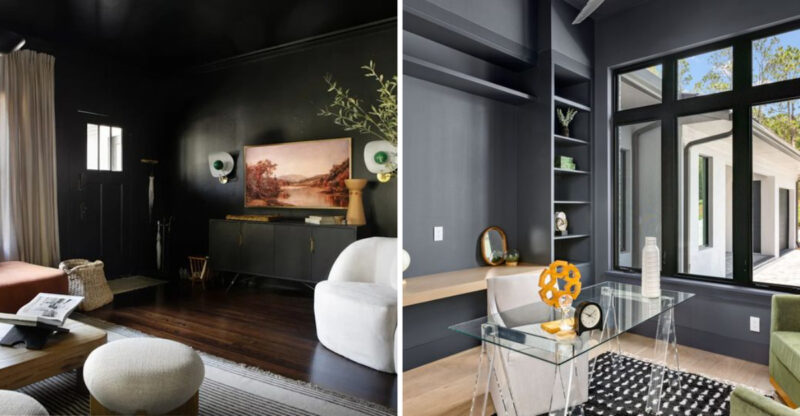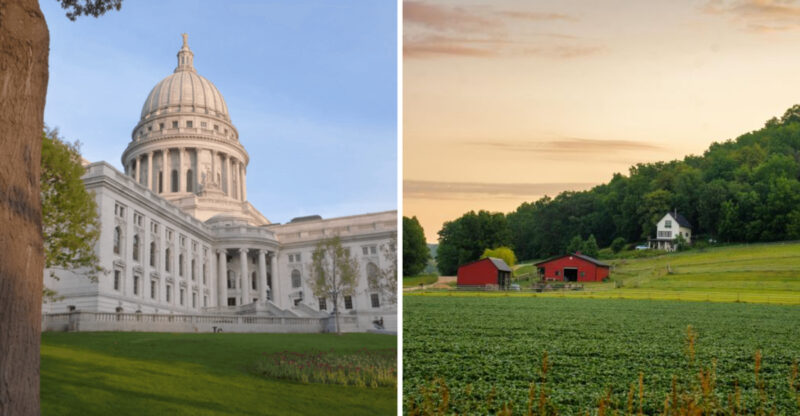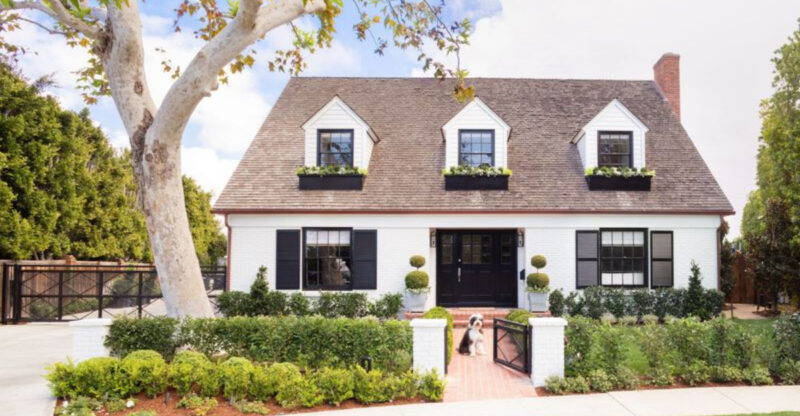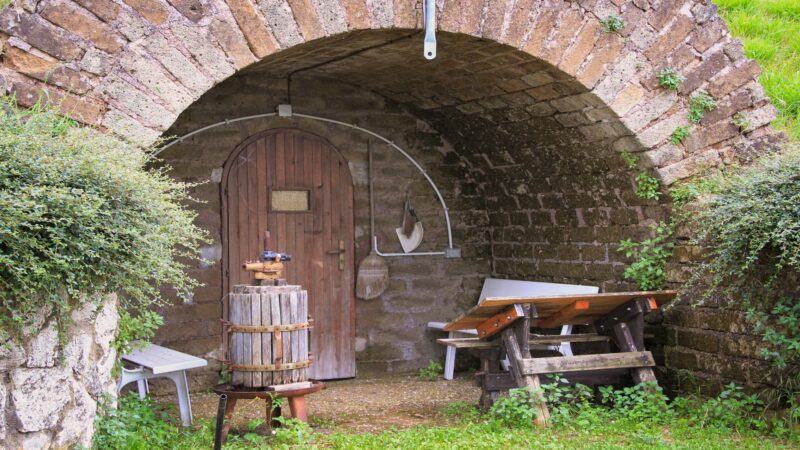9 Distinctive Craftsman Home Features Disappearing From Ohio

Craftsman homes have been a beloved part of Ohio’s architectural landscape for over a century.
These charming houses, known for their handcrafted details and natural materials, represent an important chapter in American design history.
Sadly, many original Craftsman features are vanishing as homes undergo modernization, taking with them the unique character that makes these dwellings special.
1. Exposed Beams
Walking into an Ohio Craftsman home with original exposed ceiling beams feels like stepping back in time. These sturdy wooden structures weren’t just for show they actually supported the ceiling while showcasing the skilled carpentry of the era.
Unfortunately, many homeowners now cover these beams during renovations, thinking they look outdated. Others replace damaged wooden beams with lightweight faux versions that lack authentic character.
The rich, dark wood tones of original beams created a warm, cozy atmosphere that modern replacements simply can’t match. When these architectural elements disappear, we lose a direct connection to the craftspeople who built these homes with such care and attention to detail.
2. Built-In Bookcases
Remember those gorgeous floor-to-ceiling bookcases flanking Craftsman home fireplaces? Handcrafted from oak or maple, these built-ins weren’t just practical storage – they were architectural statements showcasing woodworking mastery.
Many Ohio homeowners are removing these treasures during renovations, favoring open concept designs instead. The loss is significant since each bookcase was uniquely designed for its specific home, with glass-front cabinets below and adjustable shelving above.
What made these pieces special was their integration into the home’s architecture – not merely furniture but part of the house itself. Their disappearance erases an important element of Craftsman philosophy: combining beauty with everyday functionality through skilled craftsmanship rather than mass production.
3. Stained Glass Windows
Colorful stained glass windows once brought magical light into Ohio Craftsman homes. These weren’t the elaborate church-style designs but simpler geometric patterns or nature motifs in amber, green, and blue tones.
Sadly, these windows are disappearing as homeowners replace them with energy-efficient options. The craftspeople who created these glass treasures used techniques passed down through generations, carefully cutting and joining each piece with lead came.
During different times of day, these windows transformed living spaces with dancing colored light patterns across walls and floors. Beyond their beauty, they represented the Craftsman movement’s commitment to handmade artistry. When a stained glass window is removed, we lose not just a decorative element but a piece of artistic heritage that connected homeowners to nature and light in a uniquely beautiful way.
4. Craftsman Doors
If you’ve ever knocked on an authentic Craftsman front door in Ohio, you know they feel substantial – these weren’t flimsy entryways! Made from solid oak or mahogany, these doors featured distinctive details like small window panels arranged in rows at the top, with beautiful handcrafted hardware.
Today’s homeowners often swap these architectural treasures for mass-produced replacements. The original doors were typically stained rather than painted, highlighting the wood’s natural grain patterns and warm tones.
What’s truly special about these doors is how they welcomed visitors with a sense of permanence and craftsmanship. The mortise locks, strap hinges, and hammered copper or brass hardware were functional art pieces themselves. As these doors disappear from Ohio neighborhoods, we lose tangible connections to an era when even everyday objects were built with extraordinary care.
5. Wide Window Trim
The generous window trim in Ohio Craftsman homes wasn’t just decorative it made a statement about craftsmanship. Unlike today’s thin, mass-produced moldings, these substantial frames featured layered wood pieces, often 5-6 inches wide, creating depth and character.
Homeowners seeking a more contemporary look frequently remove this distinctive trim during renovations. The original woodwork typically featured simple, clean lines rather than ornate details, staying true to the Craftsman philosophy of honest materials and straightforward design.
Most impressive was how these window surrounds were meticulously fitted with precise mitered corners a testament to the carpenter’s skill. The substantial presence of this trim created a visual anchor in rooms, drawing attention to natural light sources. As this architectural feature vanishes from Ohio homes, we lose an element that literally framed how residents viewed the outside world.
6. Wooden Staircases
Those magnificent wooden staircases in Ohio Craftsman homes tell stories with every creaky step. Crafted from quarter-sawn oak or maple, these weren’t just ways to get upstairs they were architectural showpieces with chunky newel posts and handcrafted balusters.
Many homeowners now carpet these stairs or replace wooden balusters with iron ones during updates. The original staircases featured built-in details like reading nooks or small display shelves tucked beneath landings, maximizing every inch of space.
The rich patina that developed over decades of hands sliding along bannisters can’t be replicated with new materials. Each staircase was designed specifically for its home, with unique proportions and details that reflected the builder’s personal touch. As these handcrafted staircases disappear from Ohio homes, we lose both beautiful architectural elements and direct connections to the skilled woodworkers who created them.
7. Brick Fireplaces
The heart of any Ohio Craftsman home was its substantial brick fireplace. Unlike today’s sleek gas inserts, these were commanding structures with handmade clay bricks, often featuring a copper hood or unique tile accents around the firebox.
Homeowners frequently paint over original brick or completely remodel these fireplaces, not realizing their architectural significance. The fireplace wasn’t just for warmth it symbolized the home’s center, with built-ins flanking either side and a substantial mantel showcasing natural wood grain.
Did you know many Craftsman fireplaces included small decorative tiles from famous makers like Rookwood Pottery, founded right in Cincinnati? These artistic touches made each fireplace unique. When these fireplaces are modernized beyond recognition, Ohio loses important connections to both architectural tradition and local artistic heritage that made Craftsman homes such distinctive places to live.
8. Natural Wood Floors
The floors in Ohio Craftsman homes weren’t just any hardwood they were typically quarter-sawn oak, selected for its distinctive grain pattern and remarkable durability. These floors told the story of the home through their gentle wear patterns and rich color variations.
Sadly, many homeowners now cover these treasures with carpeting or replace damaged sections with different wood species. The original craftspeople carefully laid these floors board by board, often creating decorative borders or inlays around room perimeters.
What made these floors special was how they aged developing a natural patina that couldn’t be replicated by modern finishing techniques. The planks were typically narrower than today’s flooring, creating a more intricate visual pattern across the room. As these authentic floors disappear from Ohio Craftsman homes, we lose a direct physical connection to the spaces where generations of families have lived their daily lives.
9. Porch Columns
Those distinctive tapered porch columns stand as the most recognizable feature of Ohio Craftsman homes. Usually stone or brick at the base with a wooden upper portion, these weren’t just supports they were architectural statements announcing the Craftsman philosophy.
Modern renovations often replace these columns with simpler posts that lack the original proportions and details. The classic Craftsman column tapered upward, creating a sense of solidity and strength that welcomed visitors to the home.
Most impressive was how these columns connected the home to its surroundings through natural materials and honest construction. No two sets of original columns were exactly alike each reflected the builder’s interpretation of Craftsman ideals. As these distinctive columns vanish from Ohio neighborhoods, we lose the most visible symbol of this important architectural style that prioritized handcraft over mass production and natural materials over artificial ones.






